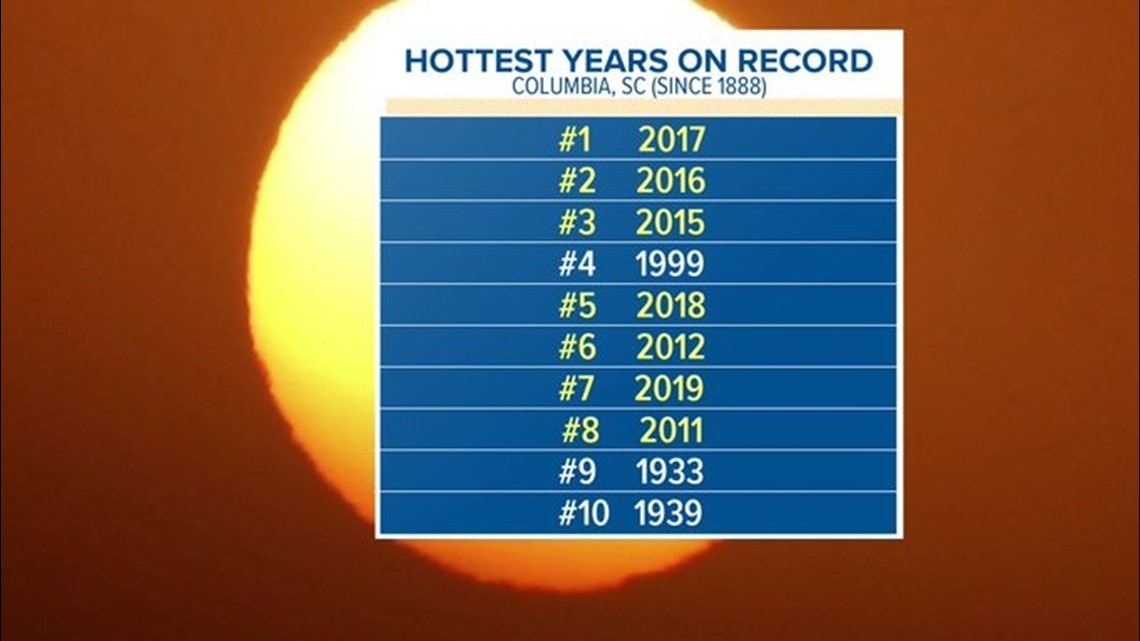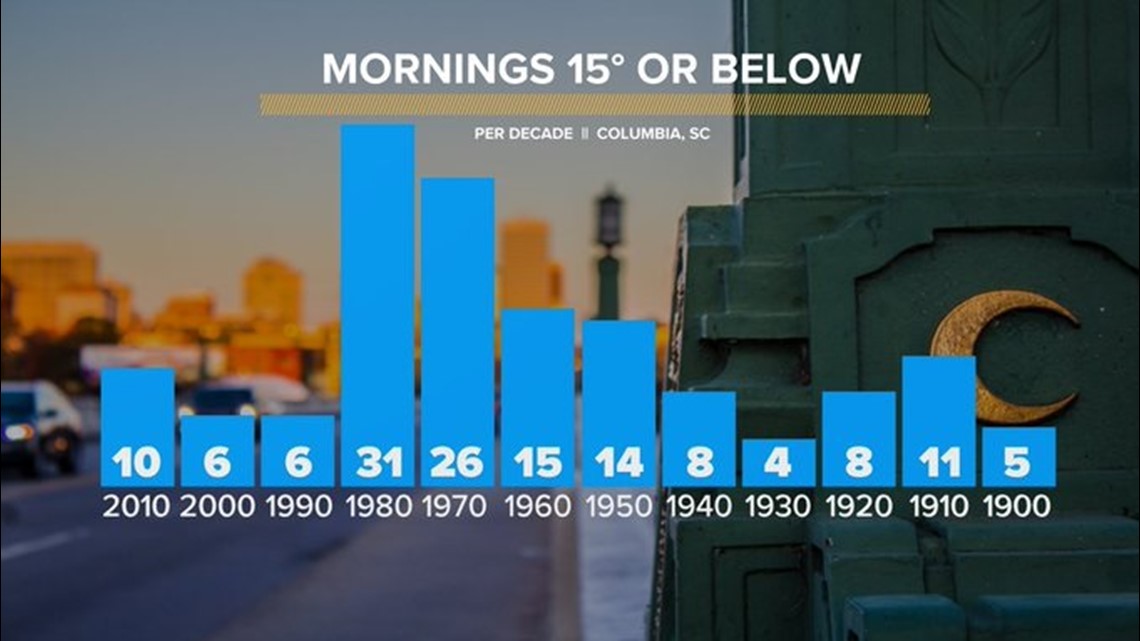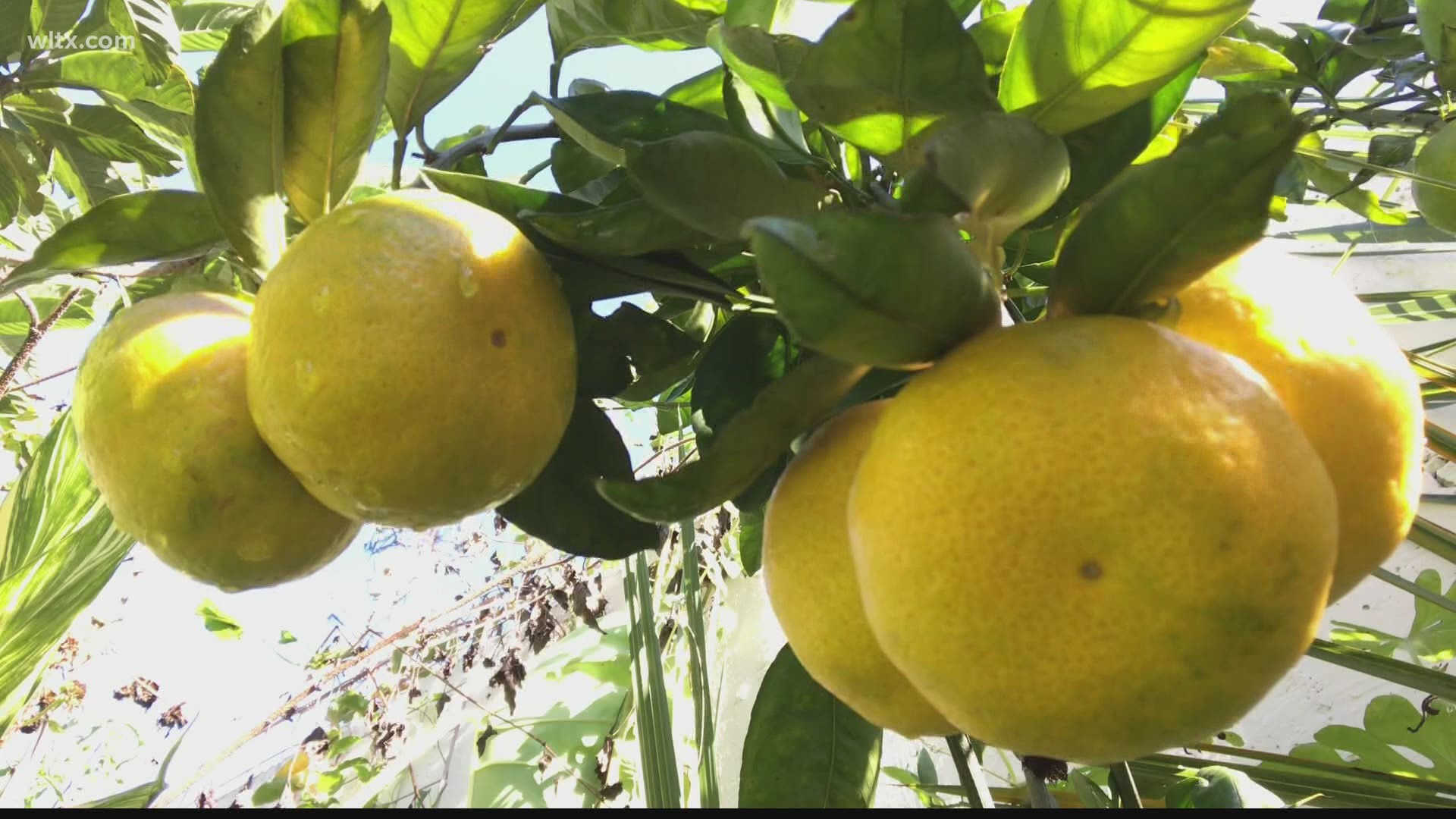COLUMBIA, S.C. — Citrus were once a fruit that didn't have a chance in the Midlands of South Carolina, but many gardeners are having luck in recent years. Temperatures are trending warmer across the Midlands, and across the world; however, this climate shift doesn't necessarily make growing cold-sensitive plants any easier in the Southeast US.
There are hundreds of varieties of citrus available to grow. Each variety has different cold tolerance and ripening times. The fruits come in a variety of different shapes, colors, and flavors. Many citrus are frost sensitive and ripen in the winter. Just one cold morning can make it difficult to reap the fruits of an entire year of labor.
I planted an Owari Satsuma Mandarin in Gandy's Garden at WLTX because it's one of the most cold tolerant and early ripening citrus available. The Midlands has a history of getting too cold on occasion for even this citrus variety, so I decided it'd be a great indicator of how warm our winters are getting.
Our Climate is Getting Warmer
Columbia, South Carolina, is trending noticeably warmer in recent decades. I took a look back at the weather records, which have been kept in Columbia since 1888. Incredibly, the top eight warmest years on record have occurred in the past 20 years. This point really hits close to home as I look into the October garden and see citrus ripening in a climate that's historically too cold for them. Columbia has broken or tied 17 warm temperature records in the month of October in the past 10 years, and 0 cold weather records in that time period.


Arctic Blasts are not a thing of the Past
The southeast has experienced fewer arctic blasts in recent decades than during the 1970s and 80s. To prove this, I took a look at the number of mornings in Columbia that dropped to 15F or below. Temperatures in the mid teens will damage even the most cold tolerant sweet citrus varieties without some added protection. It turns out, gardeners had to cover plants like citrus up to 5 times more frequently in the 1970s and 80s than they have in the 2000s.
Despite recent decades being warmer than in years past, the frequency of arctic outbreaks does not have a clear decrease. I looked deeper into the record book for Columbia and noticed the frequency of arctic outbreaks in the early 1900s are similar to today's numbers. Citrus would not have been much more difficult to grow 100 years ago than today.


Warmer temperatures threaten to stress our native plants in the future. This Allows non-native and invasive species to do harm to our ecosystems and potentially out compete natives. Meanwhile, desirable warm weather plants may still suffer in the southeast from occasional extreme cold.

